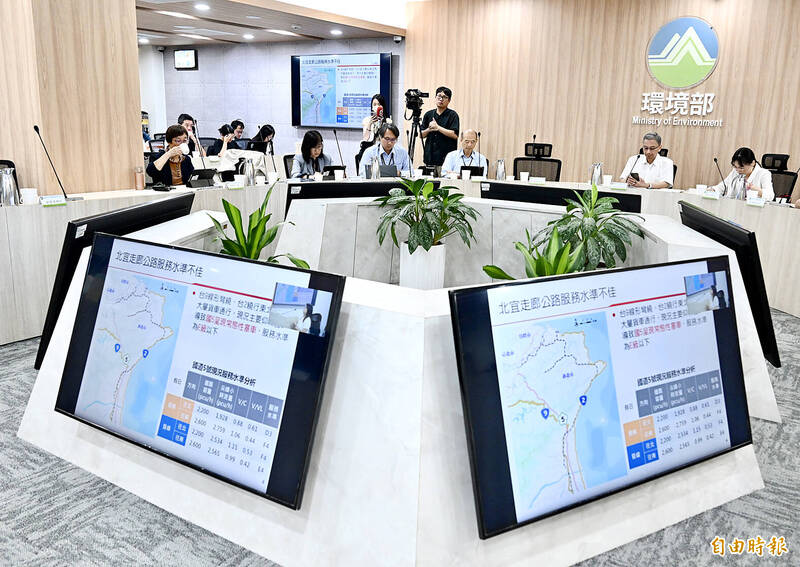Report on Mid-Shore Household Hazardous Waste Disposal Initiative and Sustainable Development Goal Alignment
1.0 Event Overview
A Household Hazardous Waste (HHW) disposal event has been scheduled for Saturday, October 4, at 26375 Hobbs Road in Denton. This initiative provides a crucial service for residents, offering a free and responsible method for disposing of hazardous materials. The program is available to residents of the following Mid-Shore counties:
- Caroline County
- Kent County
- Queen Anne’s County
- Talbot County
This event is a practical application of community-based environmental stewardship, directly contributing to local and global sustainability targets.
2.0 Contribution to United Nations Sustainable Development Goals (SDGs)
The HHW disposal day directly supports the achievement of several key Sustainable Development Goals (SDGs) by promoting safe, resilient, and sustainable communities.
- SDG 11: Sustainable Cities and Communities: By providing essential solid waste management services, this initiative helps create safer and more resilient human settlements. It mitigates environmental risks associated with improper hazardous waste disposal within communities.
- SDG 12: Responsible Consumption and Production: The event is a direct implementation of Target 12.4, which calls for the environmentally sound management of chemicals and all wastes. It ensures that hazardous materials are handled properly, significantly reducing their release into the air, water, and soil.
- SDG 3: Good Health and Well-being: Preventing hazardous chemicals from contaminating the local environment is critical for safeguarding public health. This program reduces the risk of human exposure to harmful substances that can cause a range of health issues.
- SDG 6, 14, and 15 (Clean Water, Life Below Water, and Life on Land): The proper disposal of HHW is fundamental to protecting ecosystems. This initiative prevents toxic substances from leaching into groundwater (SDG 6), polluting rivers and oceans (SDG 14), and contaminating soil (SDG 15), thereby preserving biodiversity and environmental integrity.
3.0 Schedule of Accepted Materials
To advance these sustainability objectives, residents are encouraged to bring accepted HHW items for safe disposal. The collection will include, but is not limited to, the following categories of materials:
- Gasoline, gas/oil mixtures, and alternative fuels
- Empty propane cylinders (size #40 and smaller)
- Household cleaners and solvents
- Electronics
- Oil-based paint and usable latex paint
- Paint thinners, stains, and turpentine
- Fluorescent tubes and lamps
Analysis of Sustainable Development Goals in the Article
1. Which SDGs are addressed or connected to the issues highlighted in the article?
- SDG 3: Good Health and Well-being: The article addresses public health by promoting the safe disposal of household hazardous waste (HHW). Items like “cleaners and solvents,” “oil-based paint,” and “gasoline” can contaminate soil and water if disposed of improperly, leading to potential health risks for the community. The event provides a mechanism to mitigate these risks.
- SDG 6: Clean Water and Sanitation: By providing a designated collection point for hazardous materials, the event helps prevent these substances from being poured down drains or dumped illegally, which could contaminate local water sources and groundwater. This directly supports the goal of maintaining clean water.
- SDG 11: Sustainable Cities and Communities: The article describes a community-based initiative for waste management. Organizing a specific disposal day for HHW is a key component of creating sustainable and resilient communities by reducing the adverse environmental impact of waste.
- SDG 12: Responsible Consumption and Production: This is the most directly related SDG. The event is a clear example of promoting the environmentally sound management of waste. It focuses on the end-of-life stage for various consumer products containing hazardous materials, ensuring they are handled responsibly rather than ending up in landfills not equipped for them.
2. What specific targets under those SDGs can be identified based on the article’s content?
- Target 3.9: By 2030, substantially reduce the number of deaths and illnesses from hazardous chemicals and air, water and soil pollution and contamination. The HHW disposal day is a direct action to prevent pollution from hazardous chemicals found in everyday products like “paint thinners,” “stains,” and “fluorescent tubes,” thereby protecting residents from potential illnesses.
- Target 6.3: By 2030, improve water quality by reducing pollution, eliminating dumping and minimizing release of hazardous chemicals and materials. The event’s purpose is to offer a “responsible disposal alternative,” which directly combats the illegal dumping and release of hazardous chemicals that would otherwise degrade water quality.
- Target 11.6: By 2030, reduce the adverse per capita environmental impact of cities, including by paying special attention to air quality and municipal and other waste management. This event is a specific form of “municipal and other waste management” aimed at handling a particularly harmful category of waste, thus reducing the overall environmental footprint of the communities in Caroline, Kent, Queen Anne’s, and Talbot counties.
- Target 12.4: By 2020, achieve the environmentally sound management of chemicals and all wastes throughout their life cycle… and significantly reduce their release to air, water and soil in order to minimize their adverse impacts on human health and the environment. The article’s focus on a “disposal day event” for HHW is a textbook example of implementing this target at a local level, ensuring that waste such as “electronics” and “empty propane cylinders” are managed in an environmentally sound manner.
3. Are there any indicators mentioned or implied in the article that can be used to measure progress towards the identified targets?
The article does not explicitly state any official SDG indicators, but it implies several practical metrics that could be used to measure the success and impact of the initiative:
- Volume and Type of Waste Collected: An implied indicator for Target 12.4 is the total amount (by weight or volume) of HHW collected during the event. The article lists specific categories (“gasoline/gas/oil mixtures,” “electronics,” “oil-based paint,” “fluorescent tubes”), suggesting that progress could be measured by tracking the quantity of each type of hazardous material diverted from improper disposal.
- Number of Participating Households: The number of residents from “Caroline, Kent, Queen Anne’s, and Talbot counties” who use the service can serve as an indicator of community engagement and the reach of the program, relevant to Target 11.6. A higher participation rate indicates greater success in managing municipal hazardous waste.
- Reduction in Improper Disposal Incidents: While not directly measurable from the article, a long-term indicator for Targets 3.9 and 6.3 would be a reduction in local environmental reports of illegal dumping of hazardous materials or contamination incidents in the years following the implementation of such regular disposal events. The existence of the “free, responsible disposal alternative” itself is a measure of progress.
4. Summary Table of SDGs, Targets, and Indicators
| SDGs | Targets | Indicators (Implied from the Article) |
|---|---|---|
| SDG 3: Good Health and Well-being | 3.9: Reduce illnesses from hazardous chemicals and pollution. | Reduction in community health issues linked to improper waste disposal. |
| SDG 6: Clean Water and Sanitation | 6.3: Improve water quality by reducing pollution and dumping of hazardous materials. | Volume of liquid hazardous waste (e.g., gasoline, solvents, paint thinners) collected and prevented from entering water systems. |
| SDG 11: Sustainable Cities and Communities | 11.6: Reduce the adverse environmental impact of cities, focusing on waste management. | Number of households participating in the HHW disposal event; total amount of waste managed through this municipal service. |
| SDG 12: Responsible Consumption and Production | 12.4: Achieve environmentally sound management of chemicals and all wastes. | Total quantity and breakdown by type (e.g., electronics, paints, solvents) of HHW collected for responsible disposal. |
Source: myeasternshoremd.com






